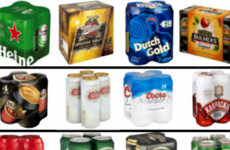LAST MONTH A photograph emerged online of two couples outside a nightclub in Belfast apparently ‘having sex’*.
A few weeks earlier, a video of an Irish tourist performing a sex act on more than 20 men in a bar in Magaluf went viral.
And of course there was ‘Slane Girl‘. Who could forget Slane Girl?
(*subsequent images appeared to show that the couples were fully clothed)
These three incidents highlight something of a cycle in the slut-shaming phenomenon – one where a woman is criticised for the way she dresses, for her romantic or sexual choices or actions, and more specifically in these three cases, where she is criticised and ridiculed to a greater extent than men also involved in those choices and actions.
So what’s the cycle?
While some of these stages are arguably interchangeable, they cycle follows a now-predictable path:
- A sexual act happens in public
- A photo or video emerges
- People talk about, search for and share the material online
- Public criticism and shaming (by both males and females) of the woman or women involved follows quickly, disseminated on social media
- The man or men in question are either ignored or celebrated, as identified by Salon.com
- The reaction to the photo or video is reported, first locally or nationally and then often internationally, particularly in online media.
- In some cases the woman or people in question are identified
- Questions about the responsibility of the man or men involved quickly follow and are disseminated on social media
The double standard
Somewhere in the cycle – usually towards the end – come the articles and discussions focusing on the double standard that emerges in these ‘slut-shaming’ cases.
The Slane Girl incident provoked reaction from the likes of Salon.com. The Guardian and the Huffington Post, whose headlines read:
In the wake of the Magaluf and Belfast incidents opinion pieces also focused on the demonising of the women while the men are largely ignored.
Some media outlets were also criticised for employing some double standards of their own. This tweet from the Australian Daily Telegraph drew derision for failing to mention that there were two men in the photo also.
Why does slut-shaming happen?
Distilling the analysis of the reasons for the double standard in the three cases mentioned above results in a general conclusion that it’s simply “different for girls”, as written by Sarah Ditum in The New Statesman in the wake of Slane Girl.
There’s also the idea that women aren’t allowed to make mistakes, aren’t allowed to be sexual, aren’t allowed to be sexual in public, and that social and online media enable and encourage the proliferation of these ideas.
In the wake of recent incidents of shaming popular Irish satirical site Waterford Whispers News responded with an article highlighting the often ridiculous online frenzy that accompanies these high profile cases:
The discussion surround slut-shaming is not limited to how it’s treated or perpetuated in the media or online though. Earlier this year an academic study was published which suggested that a group of female college students employed a ‘slut discourse’ of their own in order to establish class boundaries and legitimise their own sexual behaviour. The report, published in Social Psychology Quarterly was the result of a year spent with 53 women in a college dorm in the US.
The study’s authors pushed the important of recognising slut-shaming as a form of bullying, and highlighted that it is something that happens on a regular basis across society.
Attempting to turn the tide on slut-shaming
That stage in the slut-shaming cycle which is represented by opinion pieces and discourse on the double standards and the dangers of vilifying (often young) women and their sexuality are just part of the movement to eradicate the practice.
In April 2013 The Unslut Project was launched, encouraging people to share their stories evaluate and to “take responsibility for our own assumptions and interactions with others”. The project was inspired by a number of suicides in the US and Canada which were considered to be a result of slut-shaming and cyber bullying.
Founder Emily Linden hopes that:
…we can all work toward a world where the word “slut” doesn’t even make sense as an insult.

















COMMENTS (101)